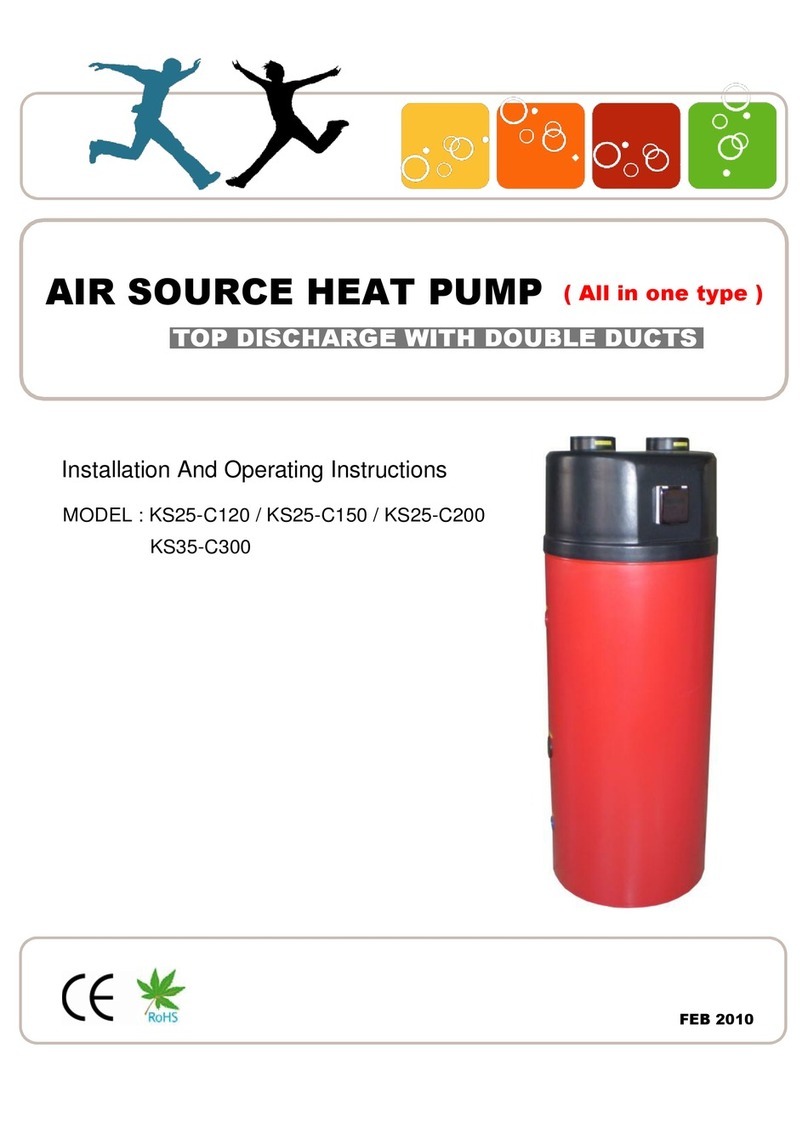
System description
Principle of operation ............................................ 3
Control panel
Layout .................................................................. 5
Explanation .......................................................... 5
General information for the installer
Transport and storage ............................................ 7
Installation .............................................................. 7
Guideline values for collectors .............................. 7
Inspection of the installation .................................. 7
Pipe connections
General .................................................................. 8
Copper Pipe connections ...................................... 8
Pipe connection (heating medium) ........................ 9
Pipe connections (water heater) ............................ 9
Pump capacity diagrams, heating medium side .. 10
Electrical connections
Wiring of the terminal (mode one) ......................... 13
Connecting the room temperature sensor ........... 14
Layout of the PCB ............................................. 15
1.5mm2 terminal connection ............................. 15
Part of wiring diagram ........................................ 16
2.5mm2 terminal connection ............................... 16
Commissioning and adjusting
Preparations ........................................................ 18
Filling and venting the collector system ............... 18
Readjusting, heat medium side ............................ 19
Emptying the water heater .................................. 19
Control
General Information ............................................. 20
Menus .................................................................. 20
Main Menu Information ........................................ 20
Sub-menu Operation............................................. 21
Sub-menu Heat Curve ........................................... 22
Sub-menu Temperature ........................................ 23
Sub-menu Operating Time .................................... 26
Adjustments to be made regularly ........................ 28
Heat Generation-General....................................... 29
Adjustment of the CURVE valve ........................... 29
Adjustment of ROOM valve.................................... 30
Adjustment of Part of the Heat Curve .................... 32
Adjustment the MIN and MAX valve ..................... 33
Maximum Return Line Temperature ..................... 35
Warm water Production........................................... 35
Regular checks .......................................................35
Check of the Operating Mode ............................... 35
Dealing with malfunctions
Draining, heat medium side ................................ 40
Component placement
Component positions 1 ........................................ 41
Component positions 2......................................... 42
Component positions 3 x 400 V / 3 / 50 HZ ......... 43
List of components
List of components ................................................ 44
Dimensions
Dimensions and setting-out coordinates .............. 45
Accessories
Accessories .......................................................... 46
Technical specifications
Technical specifications 2300 V ........................... 47
Unit Description .................................................... 3
Principle of heatpump ........................................... 4
Functions ............................................................. 6
Symbols ............................................................... 6
How to adjust the rate of flow .............................. 10
Connect the power cord ....................................... 12
Wiring of the terminal (mode two) ......................... 13
Connecting the outside temperature sensor ........ 14
Wiring diagram ( 230V / 3X400v / 50 Hz ) ............ 17
Graph of recent change in TEMPERATURE............34
Checking the Water Level of the Heating system .36
Checking the safety valves .................................... 36
In the event of leakage .......................................... 36
Alarm Messages .................................................... 37
Terminology and Abbreviations ............................. 38
Draining, water tank.............................................. 40
Draining, the chassis............................................. 40
Inspection ............................................................. 19
Adjust the brine and heat medium pump .............. 19
Enclosed kit .......................................................... 46
Sub-menu Integral ................................................. 23
Sub-menu Reset ................................................... 26
Sub-menu Man Test .............................................. 26
Description of the switch board ............................. 39
Degree Minute's(DM) instruction............................ 24
Sub-menu SETTING ............................................. 27
Sub-menu LANGUANG.......................................... 28
Adjustment of the HIGH T STOP and
............................................. 33
Pump capacity diagrams, collector side .............. 11
Filling and venting the heating medium system ... 18
Internal air vent valve, brine.................................. 18
Readjusting, collector side .................................... 19
Checking the brine Level of the brine system ........ 36
Technical specifications 3 X 400 V ....................... 48




























